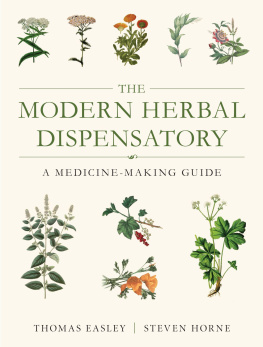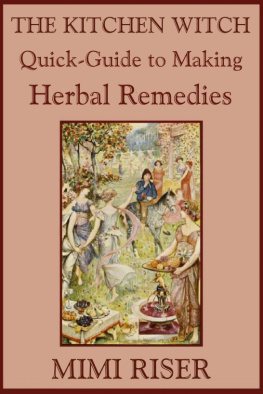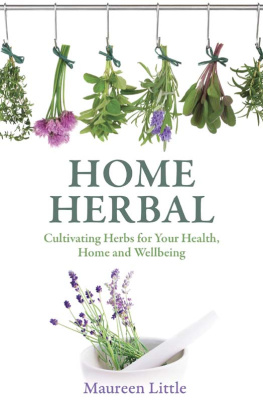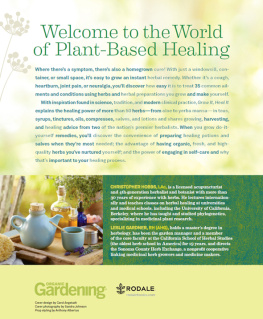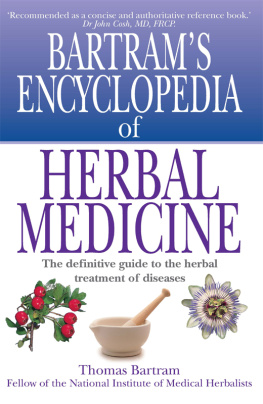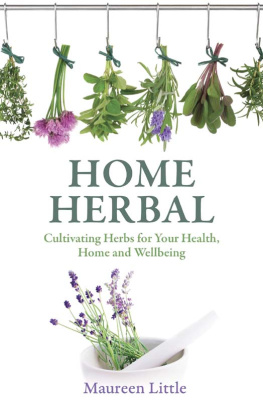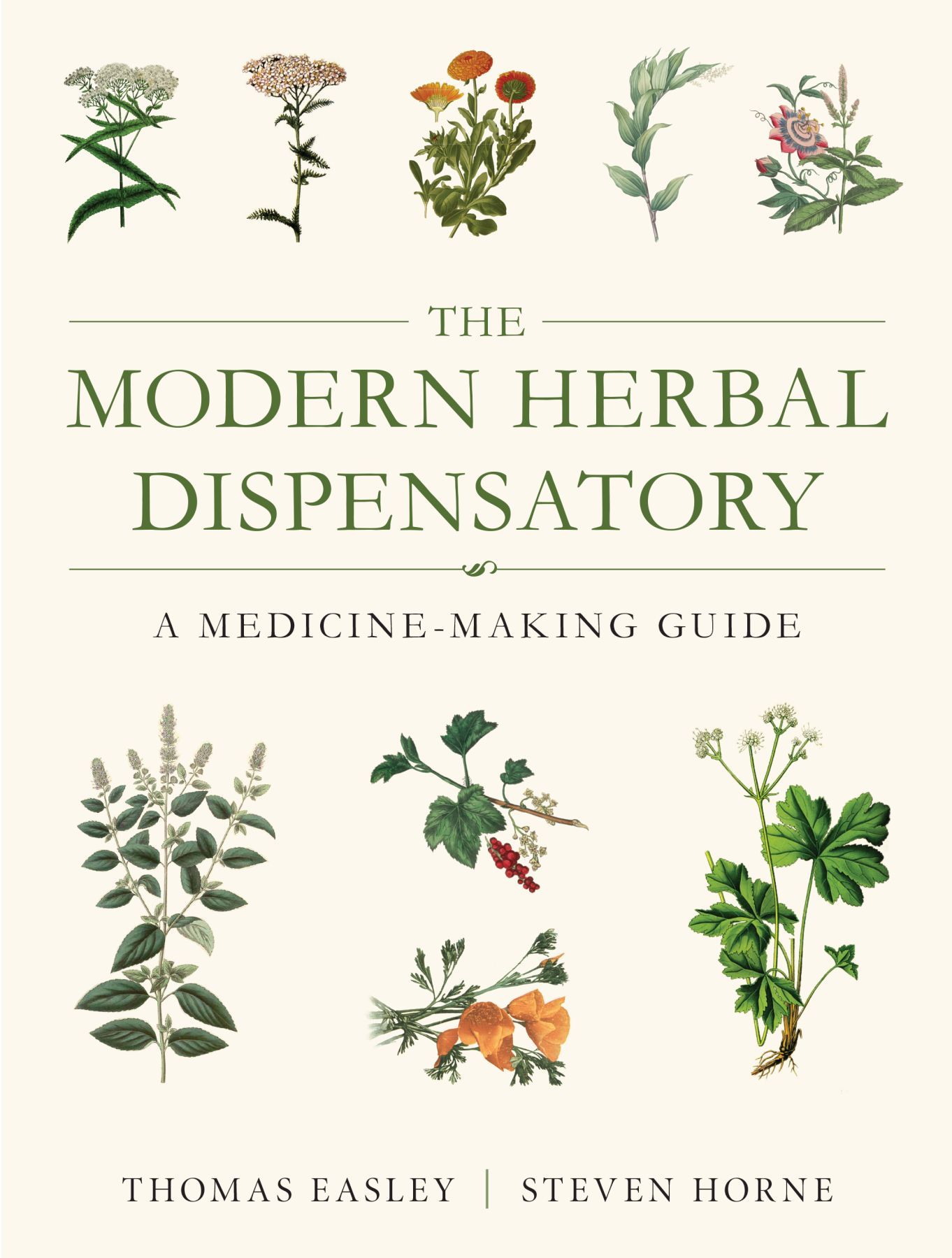
Praise for The Modern Herbal Dispensatory
The Modern Herbal Dispensatory relies on the solid foundation that comes from direct interaction with living, breathing botanicals. To this it adds a specificity gleaned from twenty-first century science: clear guidelines rooted in chemistry and physiology provide definitive answers to questions of extraction method, solvent, timing, and formulation. If youve ever wondered which extraction method to use for a given plant, or felt reluctant to try advanced techniques like percolation, this clear and concise reference guide will become a trusted companion. A must-have for herbal educators, clinicians, and manufacturers alike!
Guido Mas, cofounder and codirector, Vermont Center for Integrative Herbalism
Thomas Easley and Steven Horne have done it once again. In the Modern Herbal Dispensatory, historic traditions of medicine making have been captured and shared in a way that empowers the modern lay herbalist to capture the benefits of botanical medicine in the most accessible and potent form. Weaving together folk teachings and scientific perspectives, this book bridges the spectrum of herbal medicine to provide an inspiring, detailed, and practical handbook for herbalists at all levels of experience. This guide should be on the bookshelves of every herbal school, home apothecary, and herbal production facility.
Emily Ruff, executive director, Florida School of Holistic Living
THE MODERN HERBAL DISPENSATORY
A MEDICINE-MAKING GUIDE
THOMAS EASLEY
STEVEN HORNE

North Atlantic Books
Berkeley, California
Copyright 2016 by Thomas Easley and Steven Horne. All rights reserved. No portion of this book, except for brief review, may be reproduced, stored in a retrieval system, or transmitted in any form or by any meanselectronic, mechanical, photocopying, recording, or otherwisewithout the written permission of the publisher. For information contact North Atlantic Books.
Published by
North Atlantic Books
Berkeley, California
Cover art credits (clockwise from upper-left): (1) Eupatorium perfoliatum. (bone-set. thorough wort). New York Public Library Digital Collections. http://digitalcollections.nypl.org/items/510d47dc-4fde-a3d9-e040-e00a18064a99; (2) Common Yarrow (Achillea Millefolium). Public domain.www.briargate.org; (3) http://www.flickr.com/photos/biodivlibrary/10575241163; (4) Smilacina racemosa New York Public Library Digital Collections. http://digitalcollections.nypl.org/items/510d47dd-ef5a-a3d9-e040-e00a18064a99; (5) iStockphoto.com/Craig McCausland; (6) Mentha Piperita by J.H. Colen, taken from Illustrations of Medical Botony by Joseph Carson, M.D.; (7) iStockphoto.com/Craig McCausland; (8) Poppy, California New York Public Library Digital Collections. Accessed. http://digitalcollections.nypl.org/items/510d47d9-9c7f-a3d9-e040-e00a18064a99; (9) Anicula Europaea, plate 357 by Otto Wilhelm Thom, Flora von Deutschland, sterreich u.d. Schweiz, Gera (1885).
Cover design by Howie Severson/Diana Rosinus
All photos by Terrie Easley unless otherwise noted
MEDICAL DISCLAIMER: The following information is intended for general information purposes only. Individuals should always see their health care provider before administering any suggestions made in this book. Any application of the material set forth in the following pages is at the readers discretion and is his or her sole responsibility.
The Modern Herbal Dispensatory: A Medicine-Making Guide is sponsored and published by the Society for the Study of Native Arts and Sciences (dba North Atlantic Books), an educational nonprofit based in Berkeley, California, that collaborates with partners to develop cross-cultural perspectives, nurture holistic views of art, science, the humanities, and healing, and seed personal and global transformation by publishing work on the relationship of body, spirit, and nature.
North Atlantic Books publications are available through most bookstores. For further information, visit our website at www.northatlanticbooks.com or call 800-733-3000.
Library of Congress Cataloging-in-Publication Data
Names: Easley, Thomas, 1982 , author. | Horne, Steven H., author.
Title: The modern herbal dispensatory : a medicine-making guide / Thomas Easley and Steven Horne.
Description: Berkeley, California : North Atlantic Books, [2016] | Includes .
Identifiers: LCCN 2016013141 (print) | LCCN 2016013649 (ebook) | ISBN 9781623170790 (print) | ISBN 9781623170806 (ebook)
Subjects: | MESH: Plants, Medicinal | Plant Preparations | Phytotherapymethods | Formularies
Classification: LCC RM666.H33 (print) | LCC RM666.H33 (ebook) | NLM QV 740.1 | DDC 615.3/21dc23
LC record available at http://lccn.loc.gov/2016013141
To my wife, Terrie. Two books in three years of marriage isnt easy, and I couldnt have done it, or anything for that matter, without you.
THOMAS
I dedicate this book to the Utah midwives who taught the first class I attended on herbal medicine making and got me started in the wonderful world of making herbal products.
STEVEN
Acknowledgments
Thomas would like to thank his wife for the incredible photography. It really ties the whole book together. He would also like to thank his former intern and editor Esther Mack for making his contributions to the book more concise and understandable.
Steven wishes to acknowledge the help of his staff at the School of Modern Herbal Medicine, including David Horne, Garret Pittario, and Kenneth Hepworth, for helping to compile and edit some of the material in this book.
Contents
On Herbal Medicine
Herbal medicine is one of the most ancient of the healing arts. It is, and always will be, the medicine of the people. No matter which political party is in power, no matter what is deemed legal versus illegal, not even the FDA in all of its regulatory glory can prevent someone from stepping out their door and using natures free medicine. Herbal medicine exists, and always has, because we live in symbiosis with plants. As herbalist Sam Coffman says, with every breath we take we perform mouth-to-mouth resuscitation with nature. Plants have been here longer than we have. They have learned their lessons and adapted to their environment, and they have produced a beautiful language to communicate those lessons with other plants, animals, and fungi. The chemical compounds that plants produce, their biochemical language, is so complicated that we havent even scratched the surface in the thousand or so plants that have been researched, let alone the remaining tens of thousands of plants around the world that are used as medicine.
Although we may not understand how plants act chemically in our body, we have a long and well-documented history of their use as food and medicine. As we move toward a more sustainable world with clean energy production, locally grown organic foods, and nature conservation, we must look at our current model of medicine through the same filter of sustainability. A world that remains totally dependent on high-cost chemical medicines, controlled by multinational pharmaceutical companies whose main purpose is profit, is dependent upon the very institutions that created the environmental problems that are poisoning this world.
Modern medicine and the judicious use of pharmaceuticals are essential for treating many serious illnesses. But although it is a great disease-care system, modern medical care is not a health care system. Any system of medicine that is separated from the greater whole of health, including food production, ecological health, social health, and emotional health, can only put a bandage on a bullet wound, conveniently masking the real issues that are slowly bleeding us to death. Rising costs for disease care and lack of access to care are taking a toll on everyone, and minorities and underprivileged groups bear the brunt of that burden. In America, disease care is the primary cause of financial ruin: Nearly two million people file bankruptcy every year because of medical bills.

